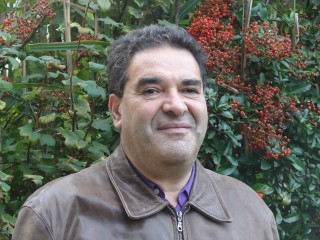This year’s Hamburg Prize for Theoretical Physics goes to Mikhail Katsnelson. The Russian physicist is particularly known for his work on graphene.
Russian physicist Mikhail Katsnelson receives the Hamburg Prize for Theoretical Physics 2016. The Prize is presented by the Joachim Herz Stiftung in cooperation with CUI. Katsnelson is working on quantum mechanical many-body theory, strongly correlated systems, and the quantum theory of magnetism as well as graphene. His theoretical work about graphene is considered as pioneering. Katsnelson was involved in several publications by the physicists Andre Geim and Konstantin Novoselov, who received the 2010 Nobel Prize of Physics for their research on graphene.

Prof. Dr. Mikhail Katsnelson. Credit: Private.
Katsnelson published his first scientific papers at the age of 17 and started his academic career in the former Soviet Union. After a short stop in Sweden he has been a professor at Radboud-University in Nijmegen, Netherlands, since 2004. There he is head of the group of Theory of Condensed Matter physics. Katsnelson is a researcher with an extraordinary broad range of interests. His work on graphene has profited intensively from his versatile expertise and methodology. Graphene has many remarkable characteristics and can be applied to very different fields of science. Therefore a multidisciplinary approach is needed.
“Mikhail Katsnelson is a researcher who stands for the exchange between theory and experiments and for overcoming the borders of disciplines. In this way he has promoted many interdisciplinary research teams. I am sure he will also succeed in Hamburg”, said Andrea Pauline Martin, vice chairwoman of the Joachim Herz Stiftung.
Graphene: extremely conductive, flexible and versatile applications
Many hopes have been raised by the discovery of graphene. The two-dimensional carbon is extremely conductive, thin and flexible, yet at the same time stronger than steel and harder than diamonds. It has potential applications in solar cells, computer chips, batteries and touch screens. All these products might get faster, more efficient and more flexible by the use of graphene.
Research and teaching stays in Hamburg
As an awardee, Katsnelson will come to Hamburg for several teaching and research visits. “We are very much looking forward to the exchange with Mikhail Katsnelson. Students and scientists can especially profit from his versatile interests”, said Prof. Klaus Sengstock, spokesperson of CUI. Katsnelson’s work on magnetism and superconductivity of strongly correlated materials are of special interest for physical research in Hamburg. “He gave important impulses in this area. I am sure his stay in Hamburg will be particularly valuable for us”, said Prof. Alexander Lichtenstein from the Institute of Theoretical Physics at Universität Hamburg.
The Hamburg Prize for Theoretical Physics was established in 2010 by the Federal State Cluster of Excellence “Frontiers in Quantum Photon Science”, which was supported by the Joachim Herz Stiftung. Since 2013 the Foundation awards the Prize together with CUI. The prize is worth Euro 40,000 and will be awarded during CUI’s scientific colloquium on the research campus in Hamburg-Bahrenfeld on 10 November 2016.

